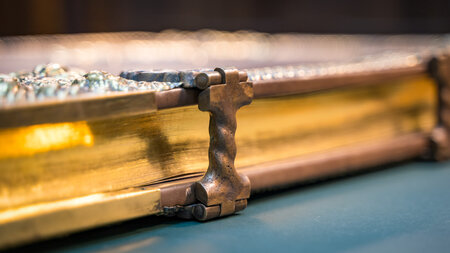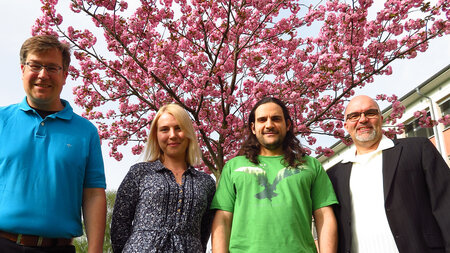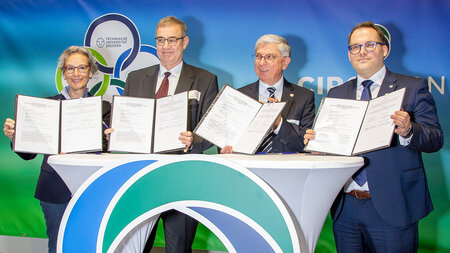High-Tech for Saxon Lightweight Construction Research
Lightweight Technologies laboratory building at the MERGE Research Centre at Chemnitz University of Technology completed - Free State of Saxony invested around 14.5 million euros, most of which came from the European Regional Development Fund (ERDF)
-
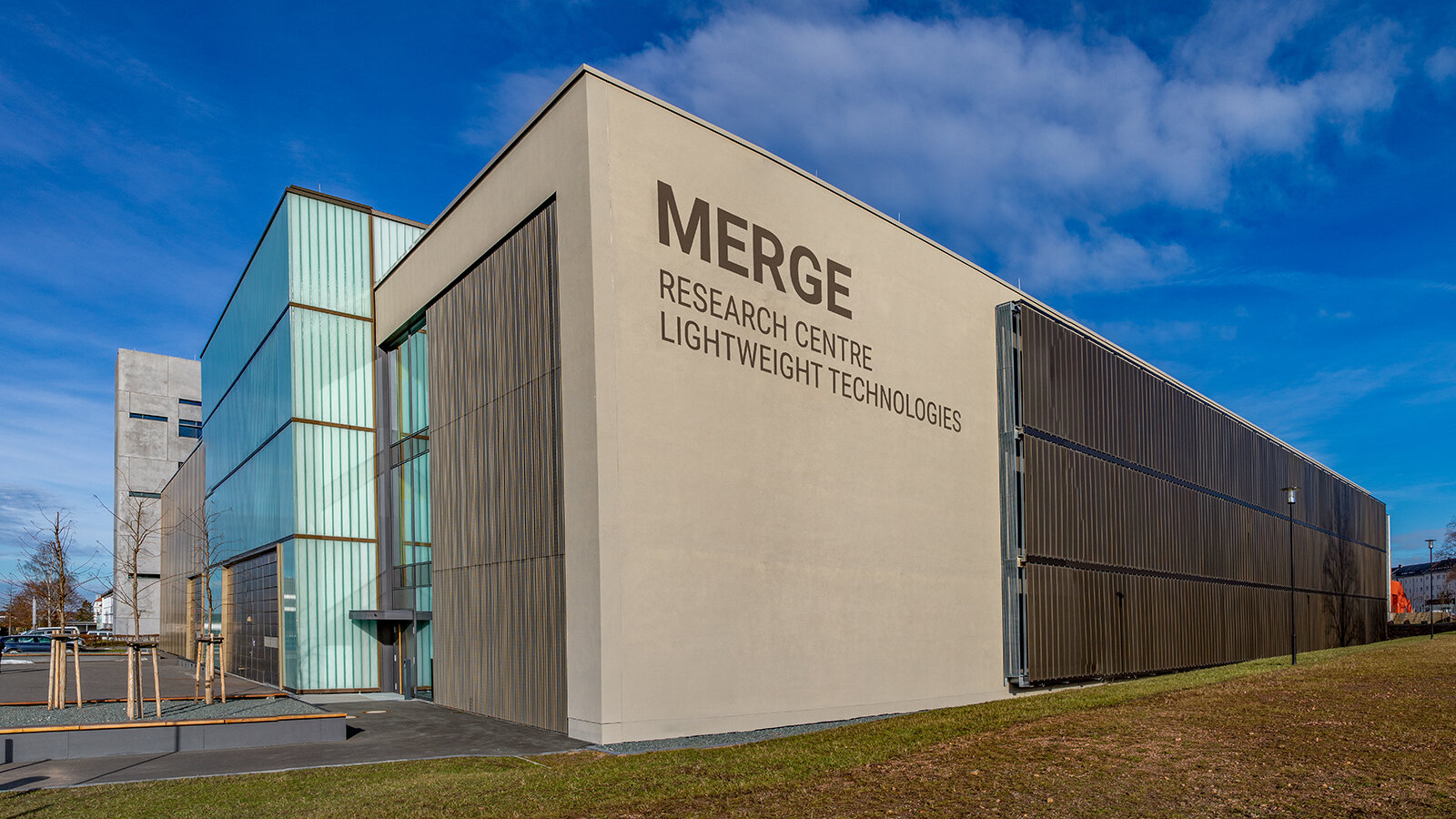
The new Lightweight Technologies laboratory building at the MERGE Research Centre of Chemnitz University of Technology is directly adjacent to the research hall already completed in 2015. Photo: Jacob Müller -
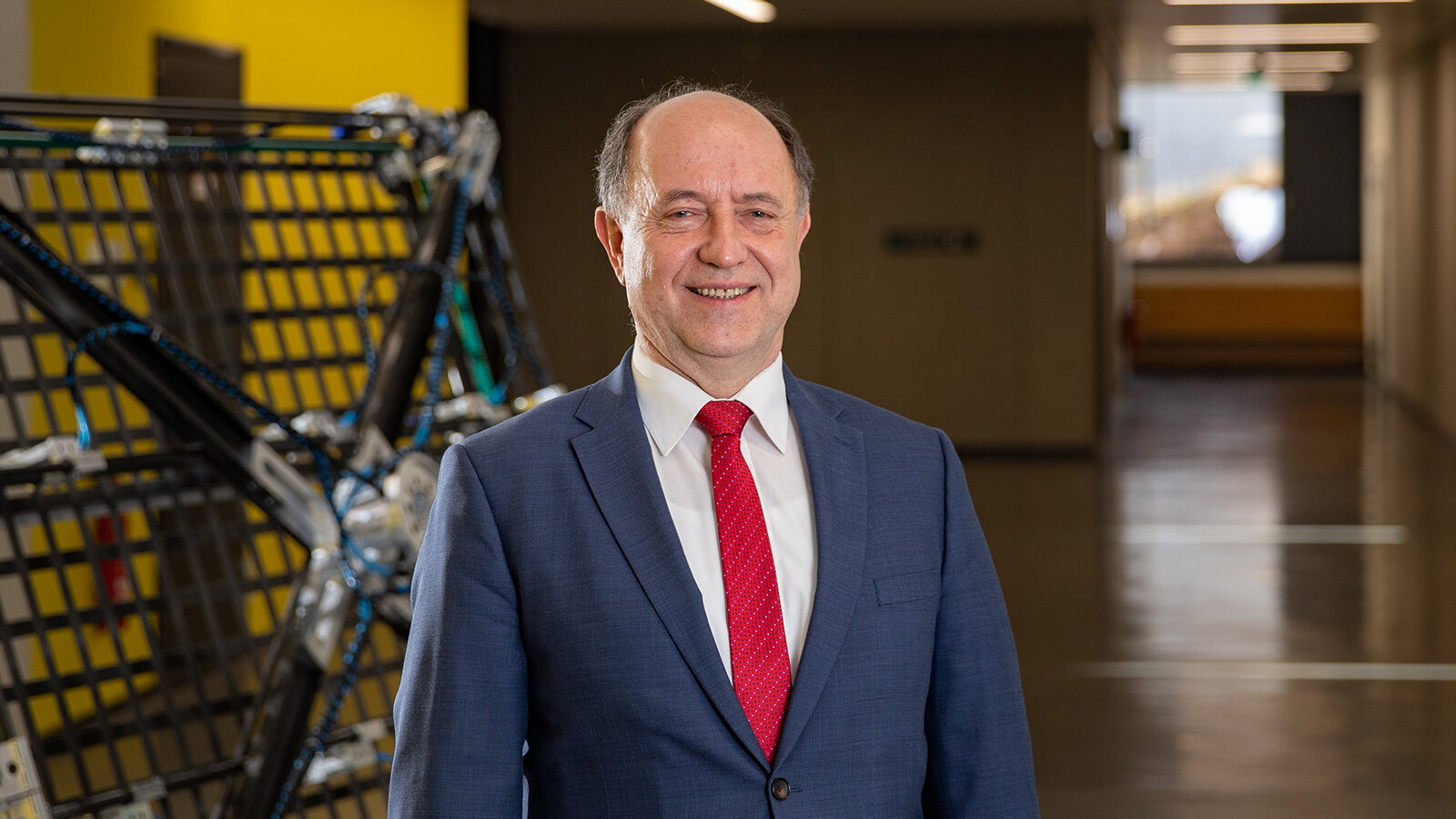
"With the commissioning of the second construction phase, the MERGE laboratory building, the integration of many decentralized laboratory facilities and thus significantly improved and faster work in the numerous research projects has become possible. In particular, the equipment in the area of testing technology, with the help of which, for example, extended material and load tests are carried out, is now entering a new league," says Prof. Dr. Lothar Kroll, Coordinator of the Central Institution MERGE and Head of the Department of Lightweight Structures and Polymer Technology at Chemnitz University of Technology. -
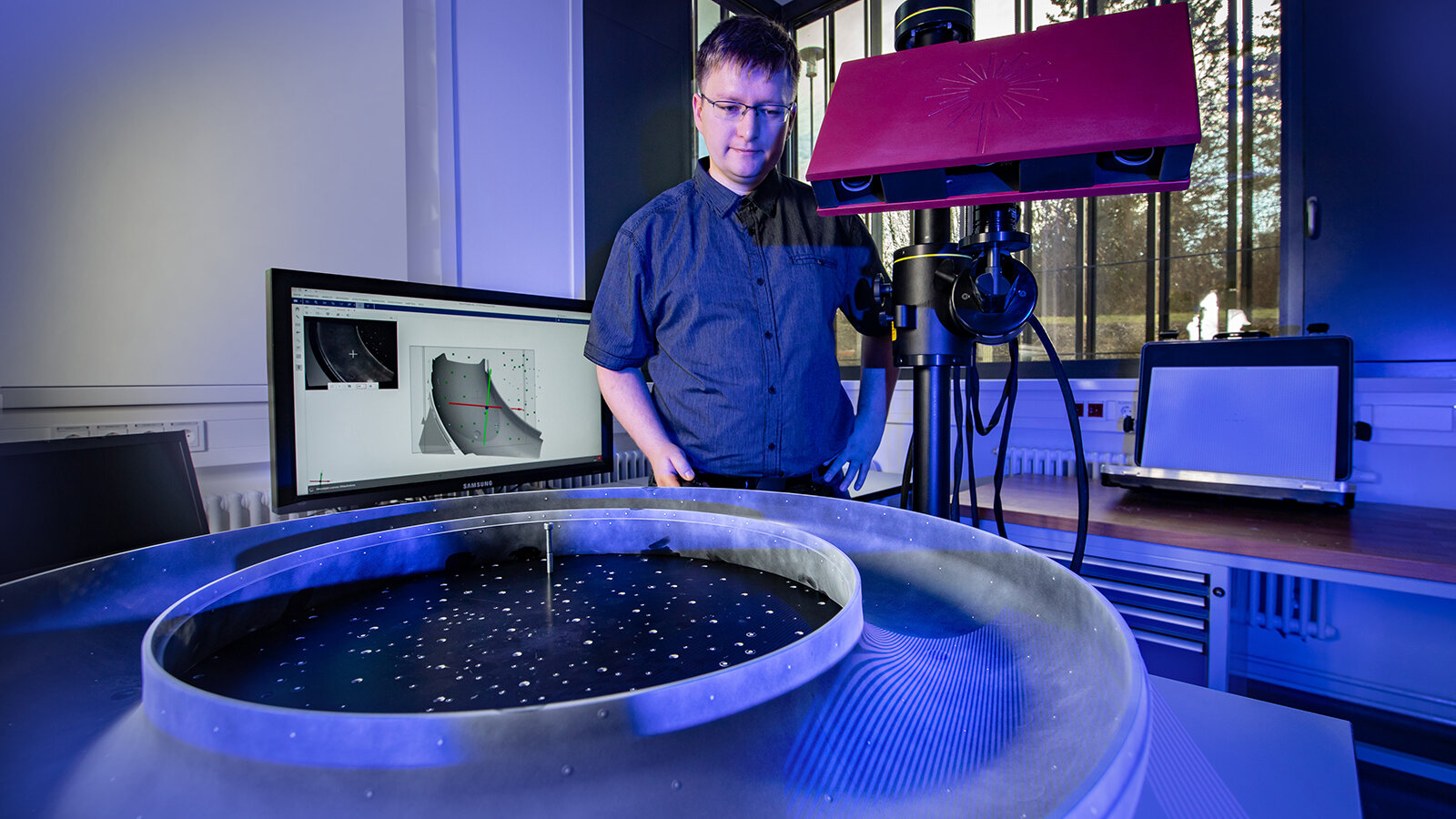
Research in the Lightweight Technologies laboratory building at the MERGE Research Centre at Chemnitz University of Technology: Toni Albrecht, technician at the Department of Lightweight Structures and Polymer Technology at Chemnitz University of Technology, uses optical 3D measurement technology to scan one half of a hydrogen tank, which can be used in the automotive industry, among other applications. Photo: Jacob Müller -
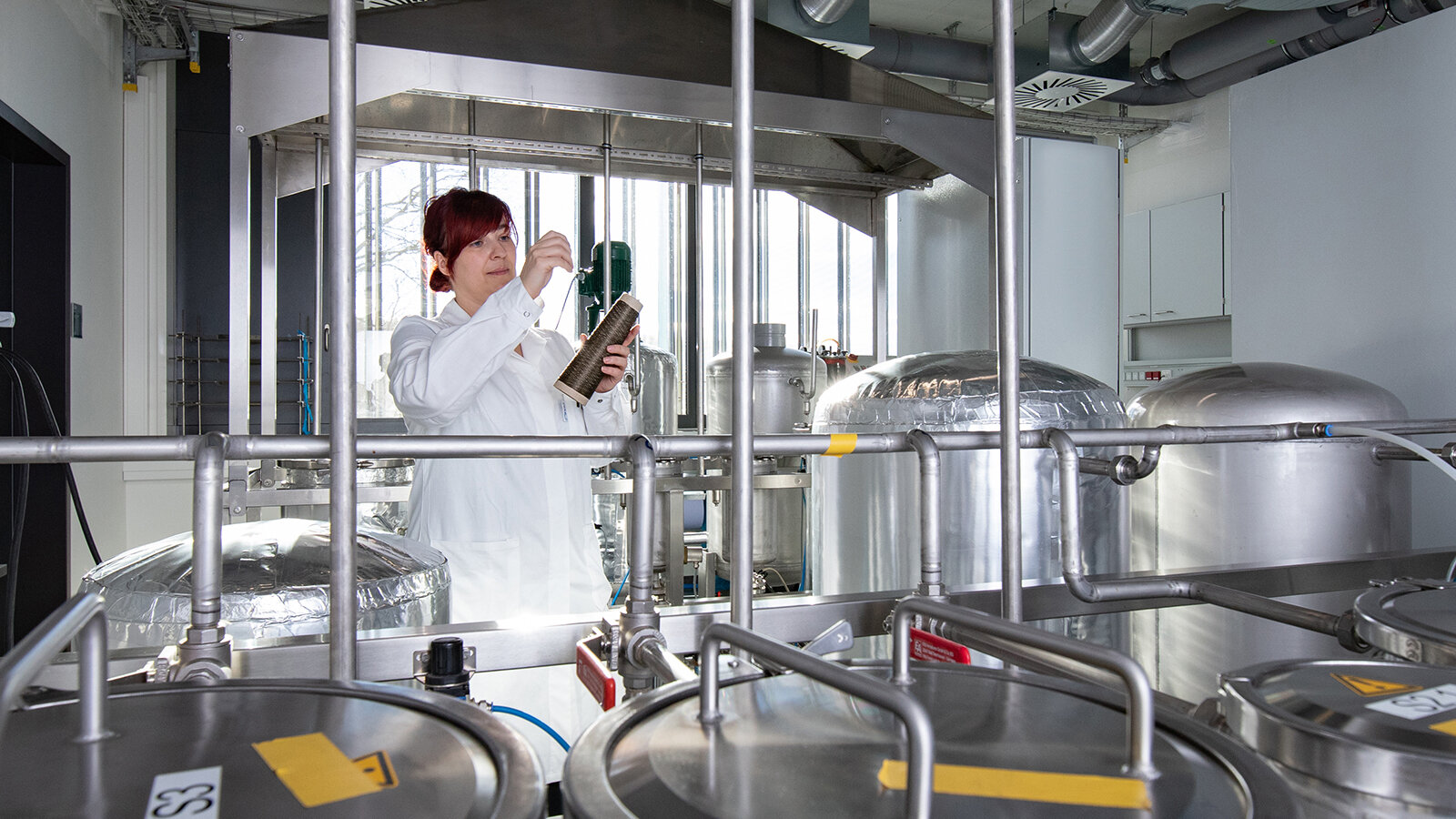
Dr. Susann Anders, research associate at the Department of Lightweight Structures and Polymer Technology at Chemnitz University of Technology, inspects a surface-functionalized synthetic yarn in the textile finishing laboratory for the uniformity of the coating. Photo: Jacob Müller -
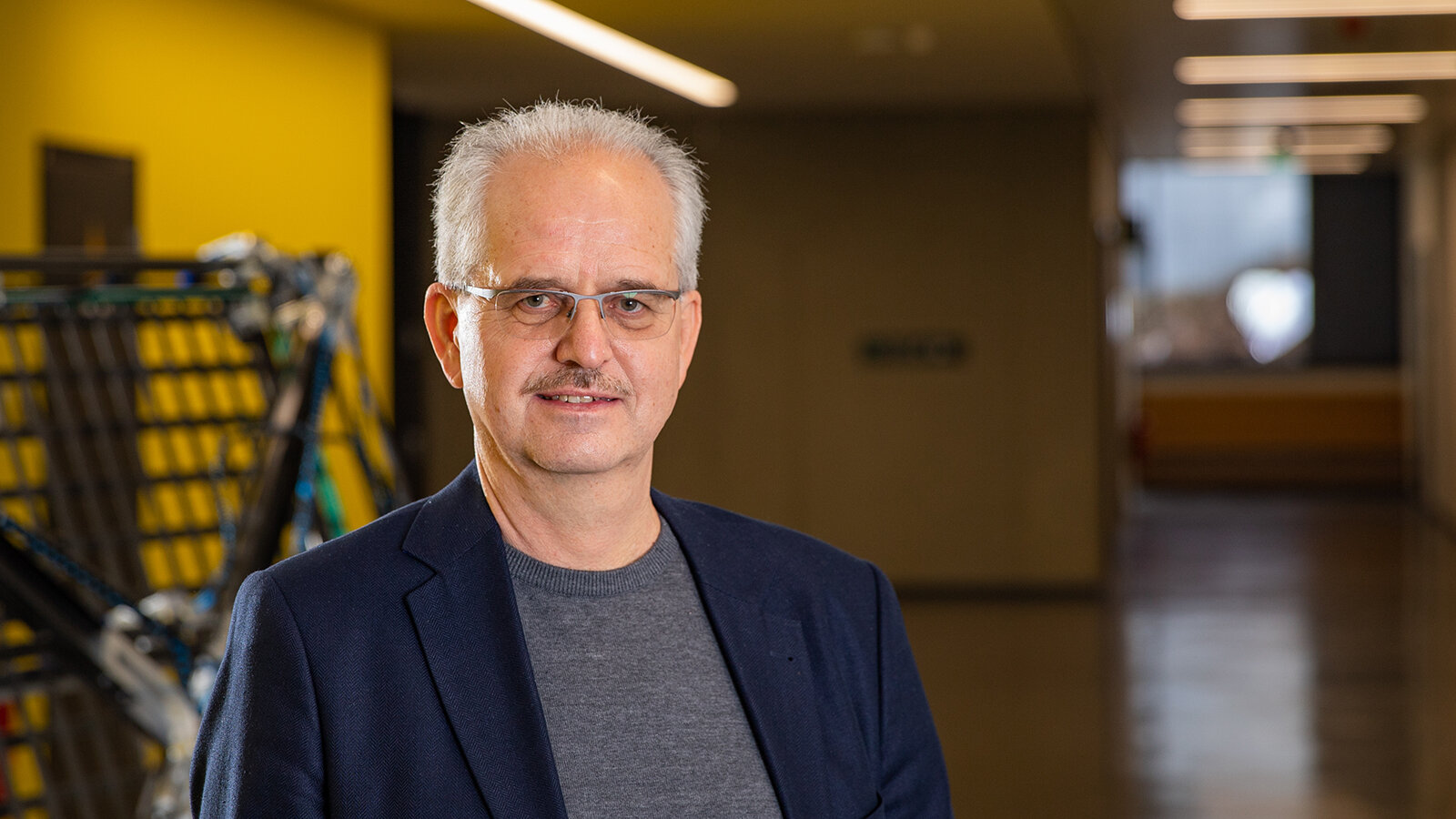
"The research center now maps all areas of lightweight construction with the associated requirements and at the same time opens up new opportunities for jointly researching, testing, and demonstrating sustainable lightweight construction. We are thus creating ideal conditions for our research groups in teaching, research, and development. In addition, the attractiveness of the professorship is further increased, not only for students, but also as a cooperation partner for research institutions and, in particular, regional industry, because there is also the possibility for medium-sized industrial companies to use the laboratory test benches, for example, to test and optimize new products," says Prof. Dr. Wolfgang Nendel, Deputy Head of the Department of Lightweight Structures and Polymer Technology. Photo: Jacob Müller -
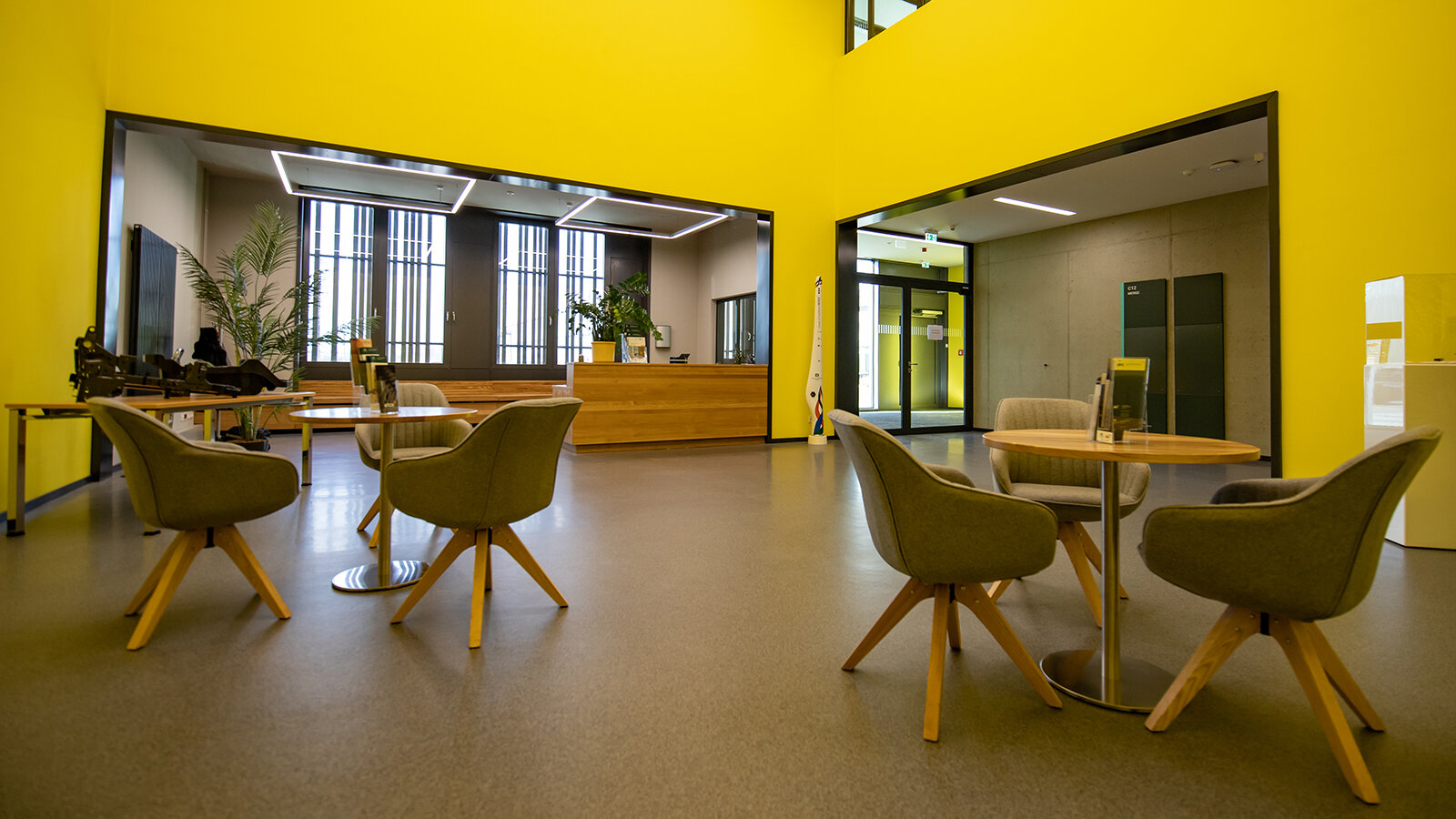
View into the foyer of the Lightweight Technologies laboratory building at the MERGE Research Centre at Chemnitz University of Technology. Here there are, among other things, opportunities for the presentation of lightweight components. Photo: Jacob Müller -
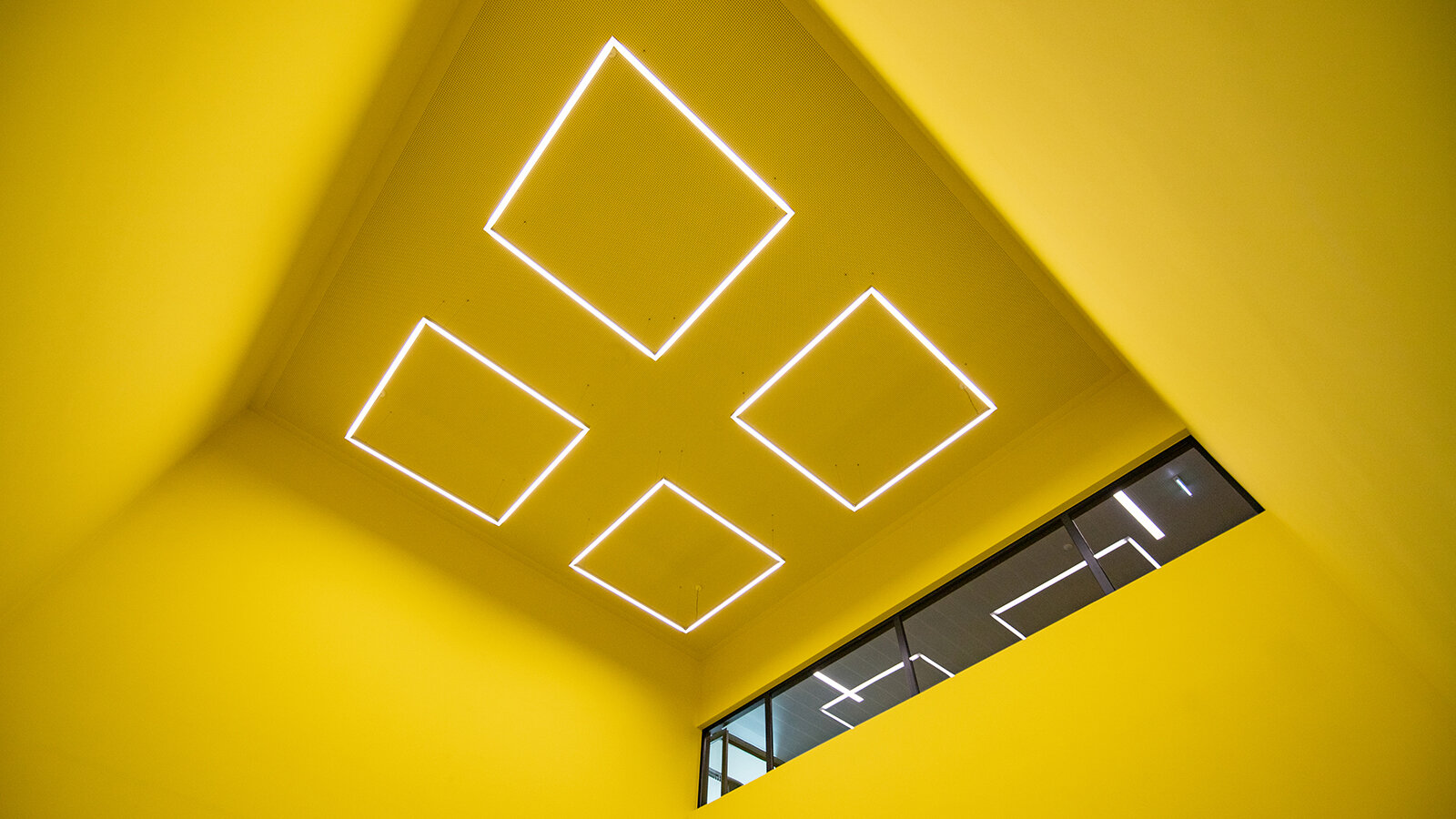
The color yellow graces the interior design of the laboratory building. Photo: Jacob Müller
(Joint press release from the Saxon State Ministry of Finance, the Saxon State Ministry of Science, Culture, and Tourism, and Chemnitz University of Technology)
The new laboratory building for the Central Institution MERGE at Chemnitz University of Technology has started its research operation. The production of novel energy- and resource-saving materials is investigated and analyzed on a total of 1,486 square meters. These materials are used, among other things, in the mobility sector and in the aerospace industry. For this purpose, a modern new laboratory building has been under construction by the state-owned Sächsisches Immobilien- und Baumanagement (SIB - 'Saxon Property and Construction Management') since August 2018. After the structural handover to Chemnitz University of Technology in October 2020 and the subsequent installation work by the university, research can now begin. In addition to highly specialized laboratory space, the new building also offers office, teaching, and meeting rooms.
"With MERGE, the Free State of Saxony is expanding its international role in lightweight construction research. For scientists from all over the world, we are creating the best conditions in Chemnitz for research and creative exchange. Chemnitz University of Technology receives another attractive location that enriches the city as a whole," said Saxony's Minister of Finance Hartmut Vorjohann. Science Minister Sebastian Gemkow adds: "The new building for MERGE will significantly strengthen lightweight construction research in Saxony and thus the Lightweight Construction Alliance Saxony. At the Chemnitz site, new opportunities are opening up for further advanced research at the highest level. This will benefit not only the participating scientists but also other partners such as those from industry. I am glad that we can offer the necessary framework conditions for consistent further development. With many future fields of application, lightweight construction is central to the economic development of the Free State."
Lightweight construction technologies continue to be among the technologies of the future for achieving sustainable reductions in CO2 in all areas of production. With maximum resource efficiency, the saving of weight, material and energy, while at the same time safeguarding or even improving the functionality and also performance of components, the advantages are clear. Lightweight construction can thus make a decisive contribution to achieving the German government's climate and sustainability goals. By combining digital process tools, innovative materials and manufacturing processes, new functionally integrated components can be developed. The use and application of bio-based materials in combination with bionically inspired designs opens new avenues for resource-efficient products and technologies in the future.
"In addition to the existing research hall, the new laboratory building is another building block underpinning the leading position of lightweight construction research at Chemnitz University of Technology and thus at the same time strengthening our core competency of resource-efficient production and lightweight structures. We would like to express our sincere thanks to the Free State of Saxony and the European Union for this important investment in Chemnitz as a center of science and industry," says Prof. Dr. Gerd Strohmeier, President of Chemnitz University of Technology.
"With the commissioning of the second construction phase, the MERGE laboratory building, the integration of many decentralized laboratory facilities and thus significantly improved and faster work in the numerous research projects has become possible. In particular, the equipment in the area of testing technology, with the help of which, for example, extended material and load tests are carried out, is now entering a new league," says Prof. Dr. Lothar Kroll, Coordinator of the Central Institution MERGE and Head of the Department of Lightweight Structures and Polymer Technology at Chemnitz University of Technology. "With the help of this technology, highly filled plastic compounds for new fuel cell applications are currently being investigated, for example. Also in the context of large-scale projects such as thermoprePlus, SmartERZ, InnoCarb Energy, and many SME-supported projects under the Central Innovation Programme ZIM, the new infrastructure will significantly support us in achieving the best possible research results, which are of enormous importance, especially for SMEs," says Kroll.
The new laboratory building extends the hall complex of the MERGE Research Centre, in which research has already been carried out since August 2015. The new building is directly adjacent to its south facade. Both buildings are connected to each other on the first floor and the second floor. There is also the possibility of adding an office building to the overall complex.
The total construction costs of the new laboratory building are around 14.5 million euros, which was financed by funds from the European Regional Development Fund (ERDF) and tax revenues on the basis of the budget approved by the members of the Saxon state parliament.
Background: MERGE - Technologies for Multifunctional Lightweight Structures
With the Federal Cluster of Excellence MERGE - Technologies for Multifunctional Lightweight Structures, Chemnitz University of Technology was among the winners of the Federal Excellence Initiative. MERGE was funded as a Federal Cluster of Excellence by the German Research Foundation (DFG) from 2012 to 2019. In the project, which is unique in Germany, around 100 scientists worked on bringing together previously separate manufacturing processes in the processing of different material groups such as textiles, plastics, and metals. MERGE researchers are now working toward reapplying for a place as a Federal Cluster of Excellence in the next strategy round in 2025. Additional information: https://www.tu-chemnitz.de/MERGE/
Saxon Property and Construction Management (SIB) brochure about the new laboratory building: https://www.sib.sachsen.de/download/2020_NL_Chemnitz_TUC-Merge2-Laborgebaeude.pdf
For additional information, please contact Prof. Dr. Lothar Kroll, Coordinator of the Central Institution MERGE, phone 0371 531-13910, e-mail merge@tu-chemnitz.de.
(Author: Mario Steinebach/Translation: Chelsea Burris, Eva Laurie)
Mario Steinebach
02.02.2021


